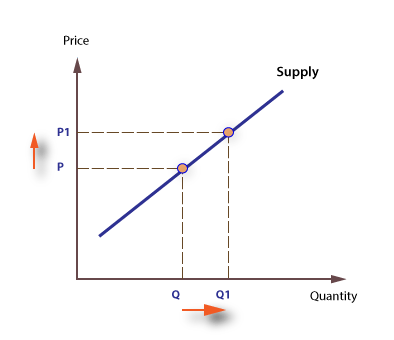Key difference between Marketing and Selling
Key difference between Marketing and Selling
| Basis of Comparison | Marketing | Selling |
|---|---|---|
| Definition | Customer-focused | Product-focused |
| Objective | Create value | Achieve sales |
| Scope | Broad | Narrow |
| Focus | Customer needs | Product features |
| Approach | Long-term | Short-term |
| Orientation | Market-driven | Sales-driven |
| Process | Integrated strategy | Transactional |
| Goal | Build relationships | Maximize profits |
| Methodology | 4Ps/7Ps Framework | Persuasion |
| Emphasis | Branding | Selling techniques |
| Communication | Two-way (feedback) | One-way (push) |
| Activities | Market research | Direct sales efforts |
| Customer Focus | Satisfaction | Conversion |
| Nature | Proactive | Reactive |
| End Result | Brand loyalty | Revenue generation |
Marketing
Marketing is the process of identifying, anticipating, and satisfying customer needs and wants through the creation, promotion, pricing, and distribution of goods, services, or ideas. It involves understanding target markets, analyzing consumer behavior, and crafting strategies to deliver value while achieving organizational goals. Marketing encompasses activities such as advertising, branding, market research, and sales. It bridges the gap between businesses and consumers by communicating a product’s value proposition and fostering relationships. Modern marketing emphasizes customer-centric approaches, leveraging digital tools and data analytics to engage effectively with audiences, ensuring sustainable growth and competitive advantage in a dynamic marketplace.
Features of Marketing:
-
Customer Orientation
Marketing revolves around the customer, focusing on identifying, anticipating, and fulfilling their needs and preferences. It emphasizes delivering value to customers to ensure satisfaction and loyalty, making the customer the centerpiece of all marketing activities.
-
Value Creation
The essence of marketing is creating value for customers through goods, services, and experiences. It involves designing products or services that meet customer expectations while ensuring the price reflects the perceived value, fostering long-term relationships.
-
Market Research
Marketing relies on research to gather insights about consumer behavior, preferences, and market trends. Effective market research helps businesses make informed decisions, segment their audience, and craft targeted strategies that resonate with specific customer groups.
-
Exchange Process
Marketing facilitates the exchange of goods and services between buyers and sellers. This exchange process involves communication, negotiation, and transactions, ensuring that both parties derive value from the interaction.
-
Continuous Process
Marketing is an ongoing process that evolves with changing consumer demands, technological advancements, and market conditions. It requires businesses to adapt, innovate, and remain dynamic to maintain relevance and competitiveness.
-
Integrated Approach
Marketing integrates various functions, including product development, pricing, promotion, and distribution. By coordinating these elements, businesses ensure a seamless and cohesive strategy that effectively reaches their target audience and achieves organizational goals.
-
Goal-Oriented
Marketing aims to achieve specific objectives such as increasing sales, enhancing brand recognition, and building customer loyalty. It aligns with the broader business goals of growth and profitability, ensuring that every marketing activity contributes to the organization’s success.
-
Focus on Relationships
Modern marketing emphasizes building and nurturing long-term relationships with customers, suppliers, and other stakeholders. It aims to create trust and loyalty through personalized interactions, ensuring mutual benefits for all parties involved.
Selling
Selling is the process of persuading and convincing potential buyers to purchase a product, service, or idea. It involves direct interaction with customers to communicate the benefits, features, and value of what is being offered. The primary goal of selling is to address customer needs and create a mutually beneficial exchange that satisfies both the buyer and the seller. Selling requires skills such as effective communication, negotiation, and relationship-building. It focuses on closing transactions and often involves identifying prospects, handling objections, and ensuring customer satisfaction. While selling is a component of marketing, it is more transactional and deal-oriented.
Features of Marketing:
-
Customer Orientation
The core of marketing lies in understanding and satisfying customer needs and wants. Marketers conduct research to identify customer preferences, behaviors, and pain points, ensuring that products or services meet their demands. This customer-centric approach builds long-term relationships and fosters loyalty.
-
Value Creation and Exchange
Marketing focuses on creating value for both customers and businesses. It involves offering products or services that solve problems, fulfill desires, or improve the customer’s life. In return, customers provide value through monetary payment or loyalty, establishing a mutually beneficial exchange.
-
Dynamic Environment
Marketing operates in a constantly changing environment influenced by factors such as technology, market trends, consumer behavior, and competition. Marketers must adapt strategies to stay relevant and competitive in response to these changes.
-
Integrated Process
Marketing is not limited to a single function but integrates various activities, including product development, pricing, distribution, promotion, and customer relationship management. These functions work cohesively to achieve marketing objectives and create a seamless customer experience.
-
Focus on Relationships
Modern marketing emphasizes building and maintaining strong relationships with customers, suppliers, partners, and other stakeholders. By fostering trust and engagement, businesses can ensure customer retention, repeat purchases, and positive word-of-mouth referrals.
-
Use of Research and Data
Marketing relies heavily on research and data analytics to make informed decisions. Insights from market research, surveys, and consumer data help identify opportunities, predict trends, and tailor strategies to meet specific customer needs effectively.
- Profit and Growth Orientation
While customer satisfaction is a priority, marketing also aims to achieve business profitability and growth. Effective marketing strategies drive revenue, enhance brand equity, and create competitive advantages that contribute to an organization’s success.
-
Communication and Promotion
Marketing involves communicating a product’s value proposition to the target audience. This includes advertising, personal selling, public relations, and digital marketing. Effective communication helps in creating awareness, generating interest, and persuading customers to make a purchase.
